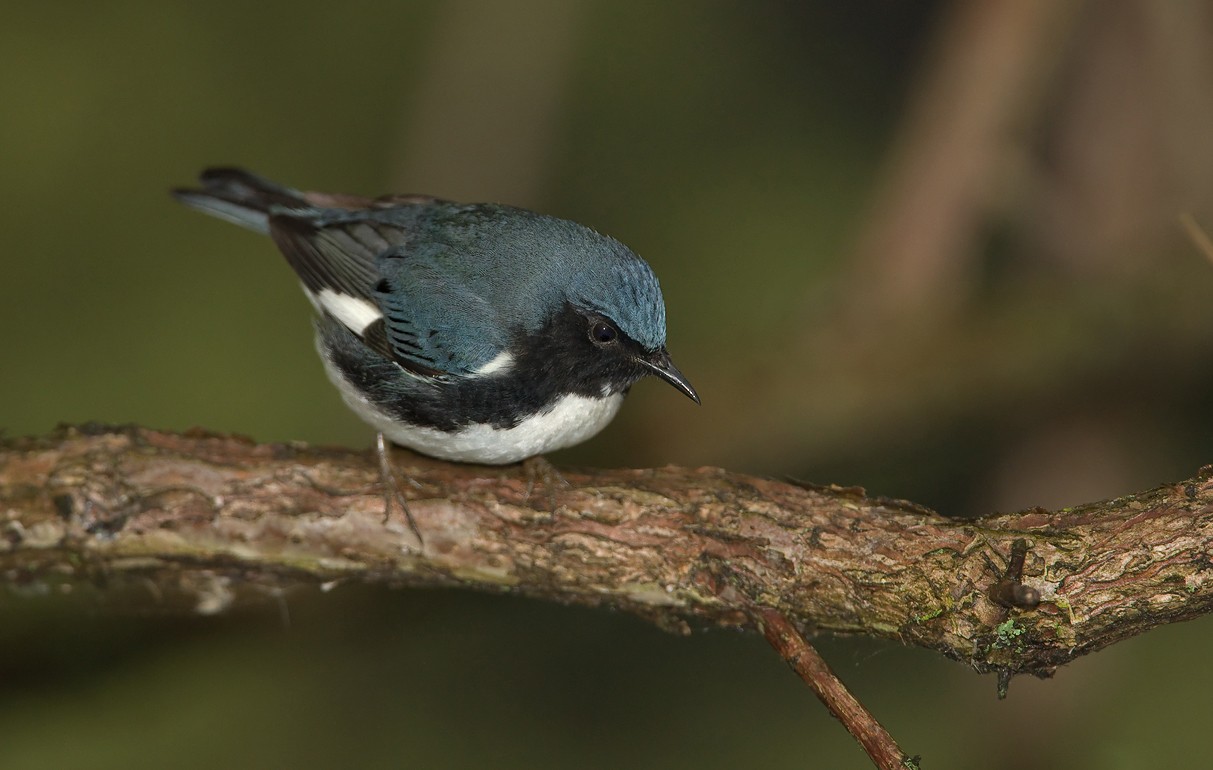Black-throated Blue Warbler
A species of Setophaga Warblers Scientific name : Setophaga caerulescens Genus : Setophaga Warblers
Black-throated Blue Warbler, A species of Setophaga Warblers
Botanical name: Setophaga caerulescens
Genus: Setophaga Warblers
Content
Description People often ask General Info
 Photo By William H. Majoros , used under CC-BY-SA-3.0 /Cropped and compressed from original
Photo By William H. Majoros , used under CC-BY-SA-3.0 /Cropped and compressed from original Description
The adult male has white underparts with a black throat, face and flanks. The upperparts are deep blue. The immature male is similar, but with greener upperparts. The female has olive-brown upperparts and light yellow underparts with darker wings and tail, gray crown and brown patches on the cheek. Both sexes have a thin pointed bill and small white wing patches which are not always visible. Like many other warbler species, it has colorful plumage during the spring and summer. 
Size
13 cm
Life Expectancy
9 years
Nest Placement
Shrub
Clutch Size
2 - 5 eggs
Incubation Period
1 - 3 broods
Number of Broods
12 - 13 days
Nestling Period
8 - 10 days
Feeding Habits
Black-throated Blue Warbler predominantly consume invertebrates, including caterpillars, crane flies, and spiders, typically foraging in low vegetation and lower canopy. They exhibit behaviors such as hovering and aerial catching, with a tendency to forage extensively in one area. During winter, their diet is supplemented with seeds, berries, and fruits.
Habitat
Black-throated Blue Warbler primarily dwells in mature deciduous or mixed forests with a robust understory, preferring hilly or mountainous terrain in the northeastern U.S. and southeastern Canada. They favor altitudes between 2,600–5,250 feet, particularly in the Appalachians, amidst shrubs like hobblebush and rhododendron. Post-breeding, the species occupies young shrubby forests, and during migration, they adapt to various woodlands, as well as parks and gardens. Winter habitats include dense tropical forests, woodlands, and shade-grown coffee plantations in the Greater Antilles.
Nest Behavior
Black-throated Blue Warbler females build the nest over 3–5 days, followed by egg-laying and both parents participate in feeding and caring for the young.
Nest Characteristics
Black-throated Blue Warbler construct their nests in understory shrubs or saplings like laurel, at 3–5 feet above ground. The cup-shaped nest is made of bark strips, spiderweb, saliva, and lined with rootlets, pine needles, moss, and hair.
Dite type
Insectivorous
People often ask
General Info
Feeding Habits
Bird food type
Bird Feeder Type

Small Tube Feeder

Platform
Behavior
Black-throated Blue Warbler diligently search for insects within the lower canopy and shrub layers, employing a methodical approach to foraging. Aggressive territory defense characterizes the males, who may engage in aerial chases or physical confrontations with intruders. During breeding, they exhibit social monogamy but may pursue extrapair copulations; males vigilantly guard their partners throughout nest-building and egg-laying periods. Black-throated Blue Warbler form loose flocks with other warblers during migration and stake out individual winter territories. Remarkably, adults display strong site fidelity both in breeding and wintering areas, frequently returning to familiar territories year after year.
Distribution Area
The species is often found in hilly and mountainous regions in the northeastern United States and southeastern Canada. In late summer, it migrates to the tropical wooded and scrub habitats in the Greater Antilles for wintering. Along the migration route, the black-throated blue warbler can be observed in habitats such as parks and gardens. 
Species Status
Not globally threatened.
Scientific Classification
Phylum
Chordates Class
Birds Order
Perching birds Family
New world warblers Genus
Setophaga Warblers Species
Black-throated Blue Warbler